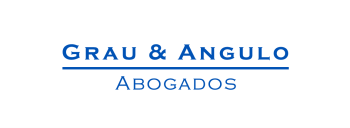Novartis holds EU Patent 2322174 (EP'174) – entitled Combined Use of Valsartan and Calcium Channel Blockers for Therapeutic Purposes – which claims a fixed combination composition comprising valsartan and amlodipine for treating hypertension.
Novartis markets the fixed combination under the trademark EXFORGE.
In October and November 2016 Novartis:
- sued several companies for the alleged infringement of EP'174; and
- sought preliminary injunctions to prevent the imminent launch of their valsartan and amlodipine generics.
Barcelona Commercial Court Number 4 granted ex parte preliminary injunctions against some of the defendants in December 2016 and January 2017. However, on the defendants' opposition and after a hearing, the court revoked the preliminary injunctions in a March 22 2017 decision.
The defendants based their defence on the grounds that the EP'174 patent was clearly invalid due to its lack of an inventive step and added matter. Regarding the inventive step, the defendants' position can be summarised as follows:
- The closest prior art was the concomitant combination of valsartan and amlodipine, which had been disclosed in, among other sources, a 1996 article by Corea. This paper discussed a comparative study of the anti-hypertensive efficacy of valsartan and amlodipine, wherein a group of patients whose blood pressure had remained uncontrolled with valsartan monotherapy were administered amlodipine simultaneously.
- The sole difference between the combination of valsartan and amlodipine disclosed in Corea's article and the claimed invention is that the latter is a fixed combination, as opposed to a free combination (ie, concomitant). The main effect of such a difference is that a fixed combination simplifies and therefore improves patient compliance.
- Considering that the advantages of fixed combinations of anti-hypertensive drugs were well known before EP'174's priority date (July 1998), a skilled person starting from the free combination of valsartan and amlodipine and aiming to improve patient compliance would have combined both drugs in a fixed combination.
Novartis alleged that the Corea article was not the closest prior art, as it did not address the same objective or purpose as the patent, which – according to Novartis – was the improvement of the anti-hypertensive efficacy of valsartan (monotherapy). Further, Novartis argued that this document did not disclose that the combination of valsartan and amlodipine is more effective and safer than valsartan alone.
Novartis argued that the closest prior art was the combination of valsartan with another anti-hypertensive drug, hydrochlorothiazide (hctz). More specifically, Novartis argued that, starting from valsartan and hctz, it would not have been obvious to replace hctz with amlodipine in order to provide an alternative combination with improved anti-hypertensive effect with respect to valsartan monotherapy.
The ex parte preliminary injunctions were revoked due to the patent's prima facie invalidity.
The court upheld the defendants' opposition and revoked the preliminary injunctions previously granted ex parte. The decision, which was deliberated by the three Barcelona patent judges, can be summarised as follows:
- After reviewing the case law of the European Patent Office boards of appeal and the Spanish courts regarding the selection of closest prior art – which states that there can be several suitable starting points – it was concluded that Corea was a valid closest prior art.
- Although Corea's main objective was to compare the efficacy of valsartan and amlodipine, the article also showed that the combination of valsartan and amlodipine was effective and well tolerated by patients.
- Fixed combinations of anti-hypertensive drugs and their advantages were well known before the patent's priority date.
- Following the defendants' arguments, it was concluded that, starting from Corea, combining both drugs in a fixed combination to improve patient compliance was obvious. Therefore, prima facie, the patent seemed to lack an inventive step and the preliminary injunctions therefore had to be revoked.
Novartis has appealed this decision before the Barcelona Court of Appeal.
This article was first published by the International Law Office, a premium online legal update service for major companies and law firms worldwide. Register for a free subscription.
For further information on this topic please contact Ignacio Pontijas at Grau & Angulo by telephone (+34 91 353 36 77) or email ([email protected]). The Grau & Angulo website can be accessed at www.gba-ip.com.



